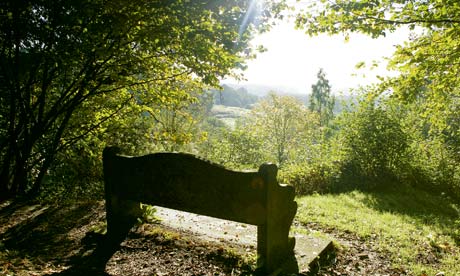
In this, the year marking the centenary of Octavia Hill's death, she seems to have been sitting permanently on my shoulder. I've thought of her so often during my time as director general of the National Trust: her passion and inspiration come tumbling down the years, challenging us, spurring us on, never tiring.
And here I am walking the footpaths around the home she lived in for the last years of her life, seeing the views she loved, thinking the thoughts she thought.
Our rangers have devised the Octavia Hill centenary trails to celebrate her life. Totalling 10 miles, they describe a figure of eight, following paths through the landscapes Octavia (pictured, right) and her family acquired for the trust in the late 1890s; passing the church where she is buried and her effigy rests; and reminiscent of her determination that others should enjoy these landscapes for ever.
We start from Toys Hill car park, in one of the woodlands perched on the crest of the Greensand Ridge that runs across Surrey between the North Downs and the Weald of Kent, acquired by the infant National Trust in the early years of the 20th century. Almost immediately, lovely views open out to the south, across the Weald, and we descend to Puddledock Lane and the hamlet of Toys Hill, where we pause by the well Octavia put in for the benefit of the villagers. We descend further and pass Chartwell House, the home of Winston Churchill from 1922 until his death in 1965.
Uphill now and towards Crockham Hill, where a simple gravestone marks where Octavia and her companion Harriot Yorke are buried. Inside the church a stone effigy of Octavia is the centrepiece. A tiny figure, clutching a tract, she is a compelling force.
Leaving the church, we cross the meadows and climb steep steps to Froghole at the top of the ridge. Here, though not visible, is the cottage (Larksfield) Octavia had built in 1884 and visited regularly until her death in 1912. Close by, her mother Caroline and sister Gertrude also had homes. They, and another sister, Miranda, donated much of the money to buy Toys Hill, Ide Hill, Mariners Hill and Crockham Hill between 1889 and 1904. It is thanks to them that this countryside retains its rural character despite being so near London.
It was places like this about which Octavia felt so passionately – places where people could escape from the pressures and deprivations of urban life and breathe fresh air: she called them open-air sitting rooms for the poor.
We rest at the top of the hill on a bench dedicated to the memory of Octavia's mother, Caroline Southwood Hill, the daughter of a great reformer and source of Octavia's philanthropy and determination.
The final stages of the walk take us past more memorials, then uphill again, past the site of the abandoned Weardale Manor, and back to Toys Hill.
All the way we have been thinking about Octavia. Many of her reflections seem as relevant to 2012 as to the 1890s. We may be better off materially, but too many people today are still deprived of access to nature and beauty. Our task continues: "The need of quiet, the need of air, the need of exercise: the sight of sky and of things growing seem human needs, common to all."

